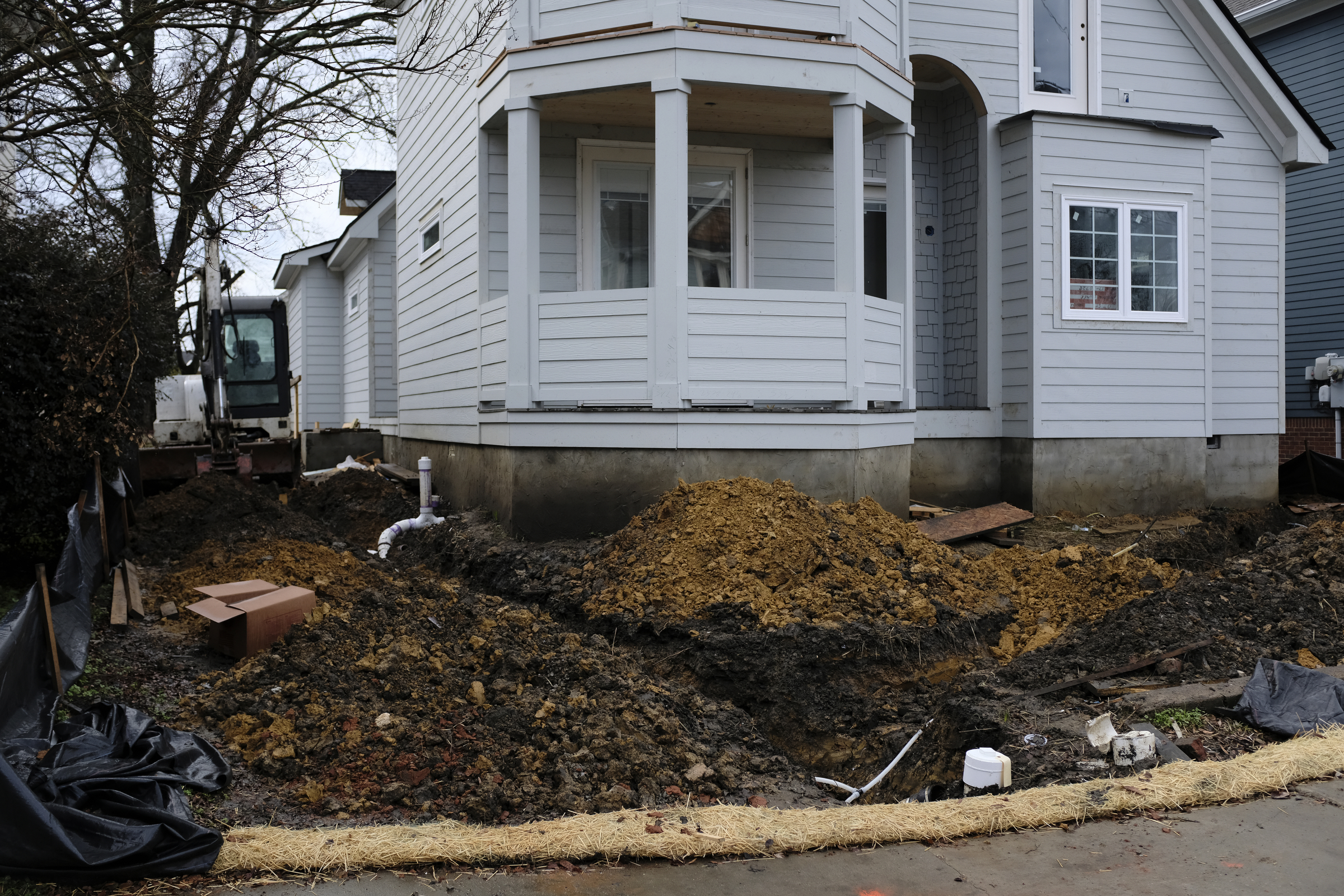What is a Superfund?
Thousands of contaminated sites exist nationally due to hazardous waste being dumped, left out in the open, or otherwise improperly managed. In response, Congress established the Comprehensive Environmental Response, Compensation and Liability Act (CERCLA) in 1980.CERCLA is informally called Superfund.Source: EPA
Speaking in Chattanooga Monday, EPA Administrator Andrew Wheeler released the final report of the national Superfund Task Force, detailing the U.S. government's official plan to remediate America's most toxic locations.
The announcement came at a new community park in the heart of the Southside Chattanooga Lead Site, where contaminated soil has plagued residents for a century across eight neighborhoods. The site serves as a beacon of success for the Superfund program, according to Wheeler. A year ago this week, it was added to the National Priorities List, which opened more funding opportunities and allowed the Environmental Protection Agency to begin replacing the lead-tainted soil. The total cleanup is expected to cost up to $26 million.
"We were able to get dozens of high-priority locations cleaned up while the rest of the remediation process continues to move forward. It is important that we make progress at these sites and not sit around and wait for decades," Wheeler said. " We believe that a site on the National Priorities List should be just that, a national priority."
The new report recommends a five-step process to transform the nation's worst hazardous waste sites: expedite cleanup, reduce the financial burden on involved parties, encourage private investment, promote community revitalization and strengthen partnerships. It comes at the request of former EPA director Scott Pruitt, who commissioned the report in 2017.
 An excavator is seen in the yard of a home under renovation in the Jefferson Heights neighborhood on Friday, Jan. 12, 2018, in Chattanooga, Tenn. Parts of Jefferson Heights, along with locations in Alton Park, Cowart Place, Richmond and the Southside Gardens neighborhoods, have been proposed as EPA Superfund sites after lead contamination was found in the yards of homes.
An excavator is seen in the yard of a home under renovation in the Jefferson Heights neighborhood on Friday, Jan. 12, 2018, in Chattanooga, Tenn. Parts of Jefferson Heights, along with locations in Alton Park, Cowart Place, Richmond and the Southside Gardens neighborhoods, have been proposed as EPA Superfund sites after lead contamination was found in the yards of homes.Toxic site remediation has been a priority of the Trump administration's EPA despite historic environmental rollbacks. The agency removed 22 sites from the list last year, the most since 2005, and is on pace to surpass that total in 2019, Wheeler said.
But Wheeler takes issue with the term "rollback."
"I think it's misused quite a bit. To me, rollback can mean modernizing. Right? It can mean updating," Wheeler said. "When people say we're rolling back, what we're doing is we're taking a look at our statutes. We're taking a look at what the law says, what the Supreme Court has told us under each of our statutes. We're taking a look at the science and moving forward to protect public health, the environment, for everyone across all of our programs."
The agency's work was praised by first-year Tennessee Department of Environment and Conservation Commissioner David Salyers, who attended the event and complimented the Trump administration as well as the EPA on its "common-sense" response.
The announcement took place at Southside Community Park, which was once a brownfield site - one that was contaminated, remediated and repurposed for another use - before opening as a park in 2017. The meeting was attended by more than a dozen EPA personnel as well as representives from U.S. Rep. Chuck Fleishmann's office, Hamilton County Mayor Jim Coppinger's office, TDEC personnel and UTC Lions Club members who have helped with community organizing.
U.S. Rep. Chuck Fleischmann, R-Tenn, statement
"The Southside Superfund Site is the perfect location to welcome Administrator Wheeler and highlight the positive impact of the Superfund Task Force. The EPA's ongoing success in Chattanooga is a testament to their ability to deploy Superfund resources to remediate contaminated sites, protect the health and wellbeing of our communities, and revitalize previously underutilized hubs of economic potential. I am thankful that Southside was added to the National Priorities List and that EPA officials continue to prioritize the safety of area residents. As East Tennessee expands and attracts further economic investments, I thank Administrator Wheeler and the expertise of EPA officials for the work they have done to advance the prosperity of our region."
Chattanooga City Councilman Erskine Oglesby, of District 7, thanked the agencies for their work transforming the community.
He reminisced about a recent community family movie night showing "Spider-Man: Into the Spider-Verse."
"Most of the time, when we had Movies in the Park, we would have to go to other communities," Oglesby said. "Now, what you're seeing with parks like this is starting to energize the potential of this area. That's one of the things that's been so exciting."
The Southside site is the final Chattanooga location on the National Priorities List in need of remediation, according to the agency. The Amnicola Dump site has been remediated and removed from the list. The Tennessee Products Superfund site has been partially cleaned and current contamination does not threaten people living and working near the site, according to the agency.
The Southside site gained public attention after a local resident reported lead poisoning in 2011. The Tennessee Department of Environment and Conservation alerted the EPA. The agency established a task force, removed contaminated soil from 84 properties and began prioritizing remediation at additional properties in eight neighborhoods with high lead readings where children were present: Alton Park, Cowart Place, East Lake, Highland Park, Jefferson Heights, Oak Grove, Richmond and Southside Gardens.
The agency promised to remediate all properties with elevated lead levels once the site was added to the National Priorities List, which would lead to more funding. The site was added in 2018. The EPA used its personnel and community groups, like the UTC Lions Club, to begin canvassing neighborhoods. The agency needed written agreements with landowners to begin the process. Personnel held public meetings, handed out flyers and went door to door to get signatures. Currently, 1,122 yards have been sampled but more than 4,000 remain. Another round of sampling will begin Sept. 16.
Residents have questioned the agency since learning of the problem. They've consistently asked why they were allowed to live in an area with unsafe soil for a century after industrial companies used toxic material in fill and topsoil. They've questioned why the historically black, low-income communities were cleaned only after investors built newer homes and white residents moved into the neighborhood.
However, EPA site leaders have maintained they began cleanup operations once they learned a problem existed.
Oglesby acknowledged apprehensiveness at the onset of the cleanup but said that has changed. He was followed later in the presentation by two community members who commended the EPA and TDEC for their work.
"The fact that things are starting to happen and people can see the positive influence, it's been great," Oglesby said.
The key now is getting signatures to continue work on additional properties. The agency will be releasing information Tuesday about more availability sessions that will be held Sept. 26 from 12-2 p.m. and 6-8 p.m. Those meetings will allow the agency to obtain more access agreements, answer questions and give hard copies of the reports to those who own live on property that has been sampled.
"My message would be please help us with access so we can conduct the sampling," EPA Region 4 Administrator Mary Walker said. "That is really where we get information on whether there is contamination. Then we can take steps. That is our message. We will have folks out and about. Please contact us if there's interest in obtaining access agreements."
Contact Mark Pace with questions, comments, concerns or story tips at mpace@timesfreepress.com or 423-757-6659. Follow him on Twitter @themarkpace and on Facebook at ChattanoogaOutdoorsTFP.

